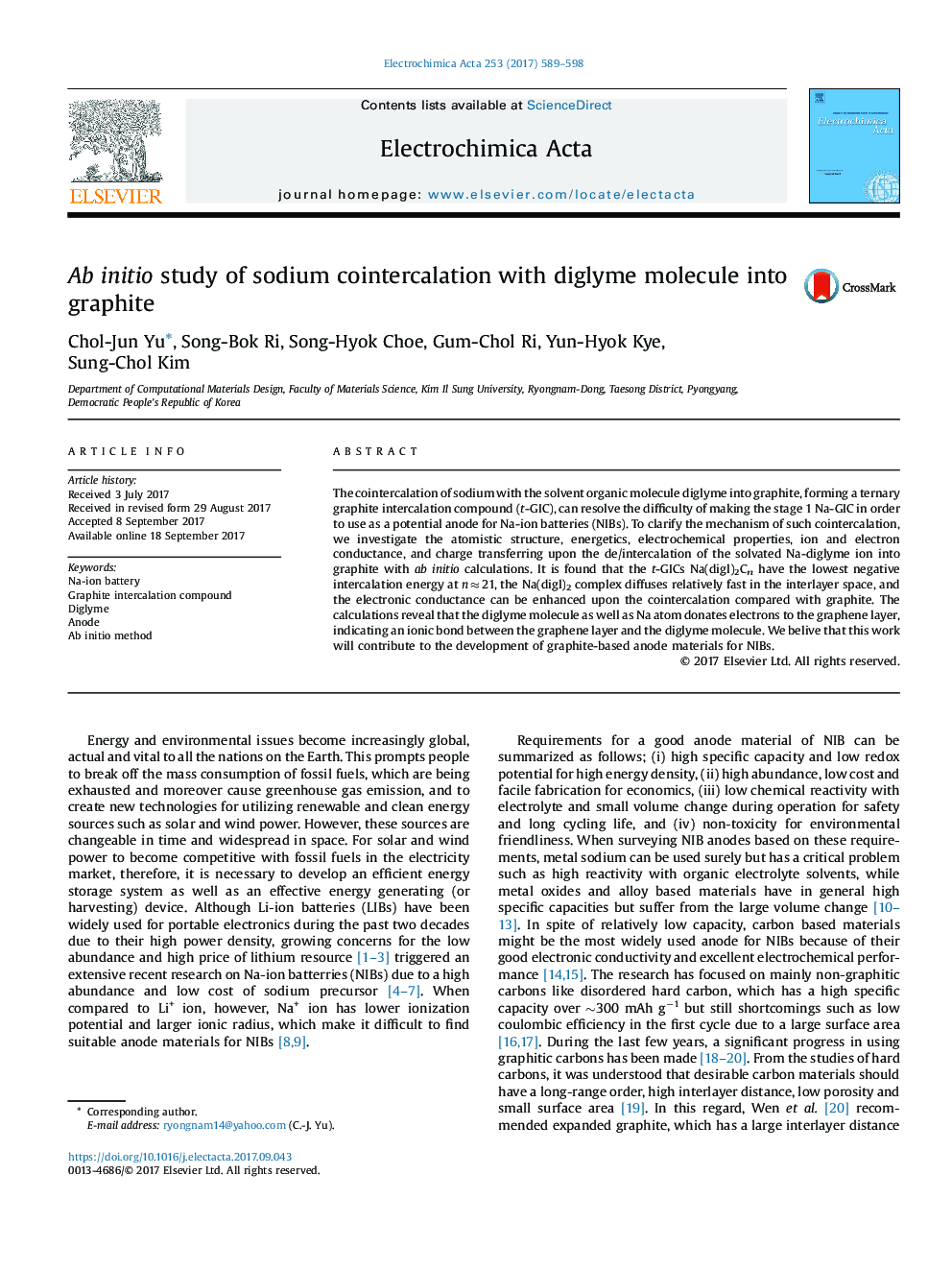| کد مقاله | کد نشریه | سال انتشار | مقاله انگلیسی | نسخه تمام متن |
|---|---|---|---|---|
| 6470202 | 1424104 | 2017 | 10 صفحه PDF | دانلود رایگان |
- Ternary graphite intercalation compounds with Na/Li and diglyme were considered.
- Interlayer distances are 10.0 Â 10.3Ã
in Na(digl)2Cn with n=18, 20, 24, 28, 32.
- The negatively lowest intercalation energy is found in Na(digl)2C21 with capacity of 100 mAh g-1.
- Sodium solvated ion migrates with an activation energy of 0.40 eV.
- Sodium and diglyme donate electrons, Li and graphene layer accept electrons.
The cointercalation of sodium with the solvent organic molecule diglyme into graphite, forming a ternary graphite intercalation compound (t-GIC), can resolve the difficulty of making the stage 1 Na-GIC in order to use as a potential anode for Na-ion batteries (NIBs). To clarify the mechanism of such cointercalation, we investigate the atomistic structure, energetics, electrochemical properties, ion and electron conductance, and charge transferring upon the de/intercalation of the solvated Na-diglyme ion into graphite with ab initio calculations. It is found that the t-GICs Na(digl)2Cn have the lowest negative intercalation energy at n â 21, the Na(digl)2 complex diffuses relatively fast in the interlayer space, and the electronic conductance can be enhanced upon the cointercalation compared with graphite. The calculations reveal that the diglyme molecule as well as Na atom donates electrons to the graphene layer, indicating an ionic bond between the graphene layer and the diglyme molecule. We belive that this work will contribute to the development of graphite-based anode materials for NIBs.
Journal: Electrochimica Acta - Volume 253, 1 November 2017, Pages 589-598
